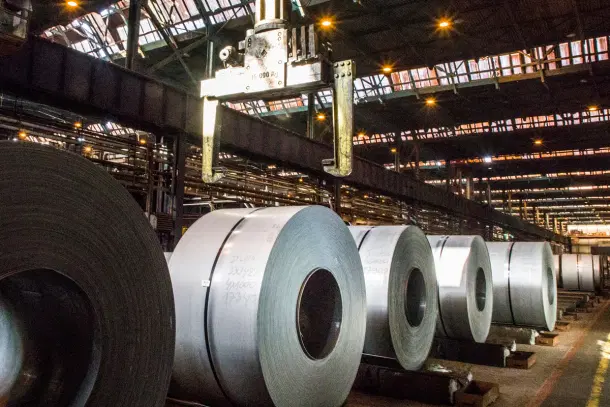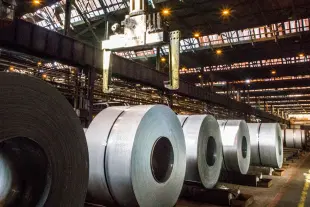Economy
Balanced Approach In Anti-Dumping Is Welcome
Pratim Ranjan Bose
Jun 28, 2023, 06:32 PM | Updated 06:32 PM IST
Save & read from anywhere!
Bookmark stories for easy access on any device or the Swarajya app.


In 2020, when the Narendra Modi government launched the ‘Atmanirbhar Bharat’ campaign, former Reserve Bank governor Raghuram Rajan was quick to point out that it shouldn’t result in “protectionism,” because such policies failed in the past.
If the imposition of safeguard duties is any indication, India became less protectionist in the next two years.
The Delhi-based Centre for Digital Economy and Policy Research (C-DEP) points out that the pace of imposing such barriers was reduced between September 2020 and October 2022.
As per the rule, the Director General of Trade Remedies (DGTR), under the commerce ministry, recommends the imposition of anti-dumping (ADD) and/or countervailing duty (CVD), based on complaints by the industry, for consideration of the finance ministry.
In the past, DGTR recommendations were an easy pass-through in the finance ministry, but no more.
Data compiled by C-Dep shows that the industry had been hyperactive in seeking protection over the last two years but the finance ministry became extra-vigilant in approving them.
The rate of rejection increased from 0.67 percent (less than one per cent) in the past to 62 per cent.
Overall, between 2020 and 2022, the finance ministry accepted 22 proposals a year on average, down from 36 a year between 1991 and 2000.
C-Dep is advocating for greater use of safeguard measures to protect domestic manufacturing, particularly in optical fibre (OFC) where India has a huge excess capacity. DGTR recently recommended anti-dumping measures on the import of optical fibre from China, Korea and Indonesia.
A controversial tool
The C-Dep analysis has some weaknesses. The two-year data set from the pandemic years is not comparable to the entire block of 29 years. In the absence of detailed data, there is no way to know if India’s approach to dumping has changed gradually or abruptly.
‘Dumping’ is a discriminatory practice. It occurs when goods are sold in foreign markets at a lower price than the price paid by domestic customers in the originating country.
Allegations of dumping became common worldwide over the last two decades. As the factory of the world, China faces the maximum flak. However, such allegations had also been highly contentious and difficult to prove.
There are allegations that countries often use anti-dumping to extract undue benefits for the domestic industry and even for retaliatory measures. In 2019, China and Indonesia slapped anti-dumping on each other’s steel products.
The Indonesian anti-dumping also involved exports from China, Russia and India. China imposed safeguard tariffs on Indonesia, Japan, South Korea and the European Union.
Anti-dumping had been reasonably controversial in India. While manufacturers celebrate protection, user industries blame trade restrictions for a lack of efficiency.
The anti-dumping on the import of truck and bus tyres from China, for example, is keenly contested by truck operators and tyre dealers, who are batting for wider market choices.
The argument has merit. Tyres contribute 30-35 per cent of the operating cost of a truck. Since India has little control over petroleum prices, the economy must explore other opportunities for cost reduction.
The Confederation of Indian Textile Industry (CITI) hailed the recent removal of anti-dumping on viscose staple fibre (VSF), as a “historic decision”. VFS is a globally popular bio-degradable man-made fibre (MMF) that is replacing cotton.
According to CITI, anti-dumping created an artificial shortage of VSF, making Indian textiles cost-inefficient in the global market. Apparently, the benefits of anti-dumping went to both the domestic VFS and polyester makers.
Balanced approach needed
A careful review may hold either side responsible for exaggerating the merits and demerits of anti-dumping. Huge excess capacities and opaque finance do create a case for unfair practices and China was often rightly blamed for that.
However, in the post-covid trade architecture, where countries are becoming selectively liberalised, the use of anti-dumping should be selective too.
For example, the production-linked incentive (PLI) offered by India, has taken care of the entire textile value chain in the targeted categories. Removal of anti-dumping was, therefore, necessary.
From PLI in India to green subsidies under the Inflation Reduction Act 2022 in the US – the world is devising new ways to ringfence the interest of the domestic industry, avoiding the glare of the World Trade Organisation (WTO).
The prized investments from Apple and Micron came to India through the PLI route. They may go a long way to protecting Indian interests in the global market. Should India spoil the environment by going hyper-active on anti-dumping?
There are also wider issues. The WTO-guided non-discriminatory MFN (most-favoured nation) tariff-based trade is fast becoming a pipedream, in the post-covid world.
In a parallel development, Free Trade Agreements (FTA) are emerging as the new vehicle of liberalised trade. India has already signed a few FTAs and more are coming.
It means the Indian industry cannot escape competition from FTA partners. There is no point in complaining about Chinese investments in Indonesia taking advantage of the Indo-ASEAN FTA to export cheap VFS to India.
The solution lies in Indian makers achieving scale and reducing the cost of production to the level of Indonesia.




